Books That Inspire Us
This is a living list.
We are continuously adding books that inspire our thinking and practice—across education, creativity, design, architecture, art, languages, and the many dimensions of teaching and learning.
It’s not complete, and it never will be. There are no affiliate links—just honest recommendations.
Come back often, and feel free to share your own favourites with us.
-

Making Learning Visible: Children as Individual and Group Learners
Project Zero & Reggio Children
“Learning occurs not only in the individual but also in the interaction among individuals. It is through this interaction that knowledge is constructed.”
This book documents a rich collaboration between Harvard’s Project Zero and educators in Reggio Emilia, exploring how learning is not only personal but also profoundly social. It offers insights into how children think, learn, and grow—both as individuals and in groups—through careful observation, dialogue, and documentation.
Blending research with practical classroom examples, the book challenges traditional ideas of teaching and assessment. It emphasizes the importance of making children’s thinking visible, valuing the learning process as much as the outcome.
Why we recommend it:
Making Learning Visible helps educators see group learning not as something secondary, but as central to how children construct meaning. It invites us to slow down, observe deeply, and rethink what it means to document and support learning. -
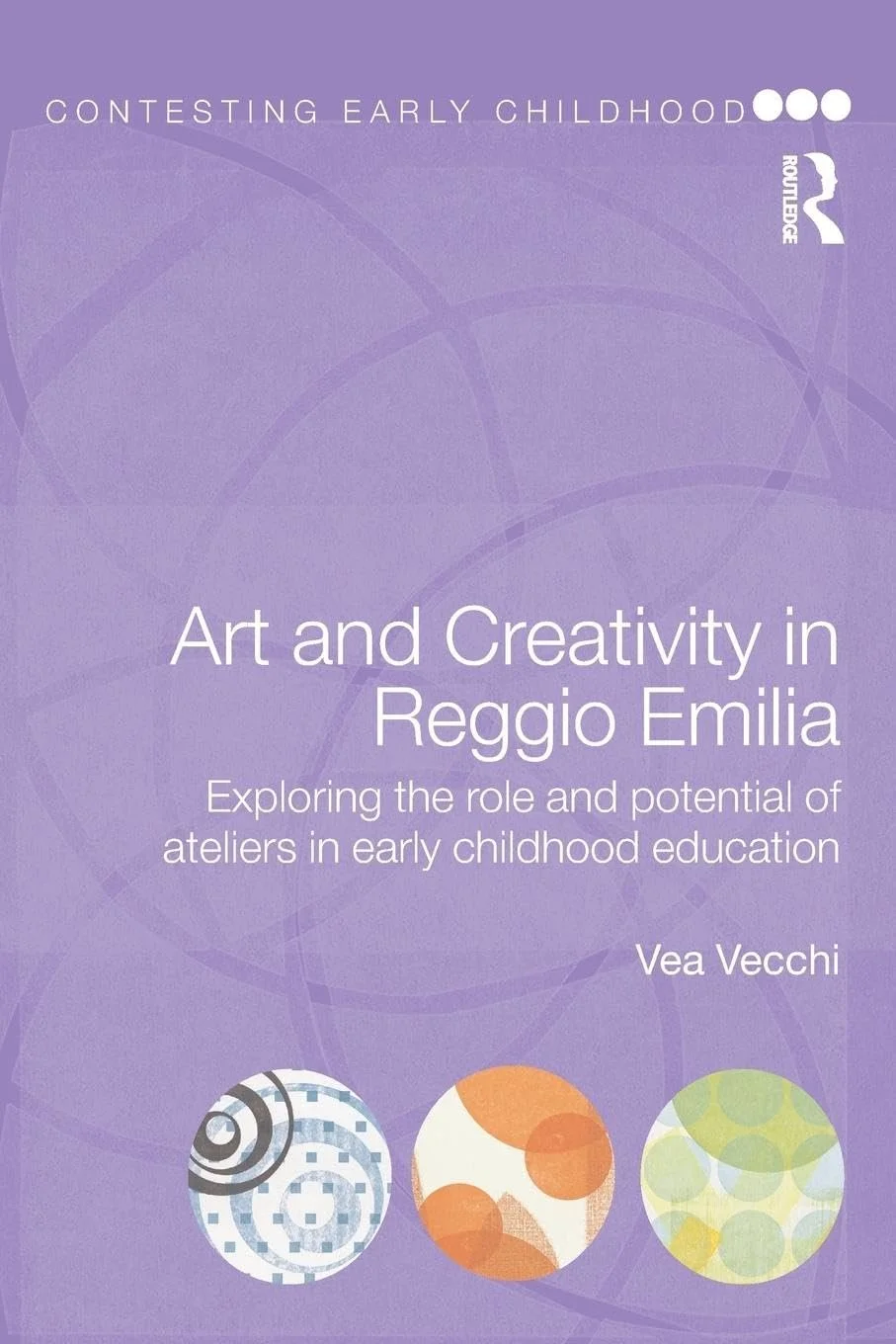
Art and Creativity in Reggio Emilia
“Aesthetic thought, poetic thought, and scientific thought do not live separately, but interact continuously.”
— Vea VecchiIn this reflective and richly illustrated book, Vea Vecchi invites us into the world of the atelier in Reggio Emilia—an educational space where children explore ideas through materials, images, and artistic processes.
Vea Vecchi, one of the first atelieristas in Reggio schools, shares both philosophical reflections and practical experiences that illustrate how art can be a language for thinking, researching, and building knowledge.
Far from treating art as an isolated subject, the book positions it as a vital part of children’s learning and expression. Through stories, photos, and documentation, it invites readers to consider the relationship between aesthetics, material, and meaning.
Why we recommend it:
This book encourages educators and artists alike to reflect on the role of creativity in education—not as a luxury, but as a necessity. It highlights the pedagogical power of beauty, imagination, and material exploration in fostering deep learning. -

The Grammar of Fantasy
All children are creative, and all children deserve the tools to use their creativity to invent the world.”
— Gianni RodariFirst published in 1973, this timeless book by Italian writer and educator Gianni Rodari offers a treasure trove of imaginative techniques for storytelling, language play, and creative thinking. Drawing from his experiences as a journalist, teacher, and children’s author, Rodari shares tools for “fantastic binomials,” word games, and narrative twists that awaken the joy of invention.
More than a book of techniques, The Grammar of Fantasy is a celebration of children’s innate creativity and a call for educators to take fantasy seriously—as a way to explore language, develop critical thinking, and see the world not only as it is, but as it could be.
Why we recommend it:
Gianni Rodari is not only revered as a children’s author, but also remembered for his visionary pedagogy, and it is these two fields he combines in this revolutionary essay collection.
Rodari’s work is playful yet deeply political. He reminds us that storytelling is not just entertainment—it’s a form of empowerment. This book is a must-read for educators, writers, and anyone who wants to bring more imagination into the learning process. -
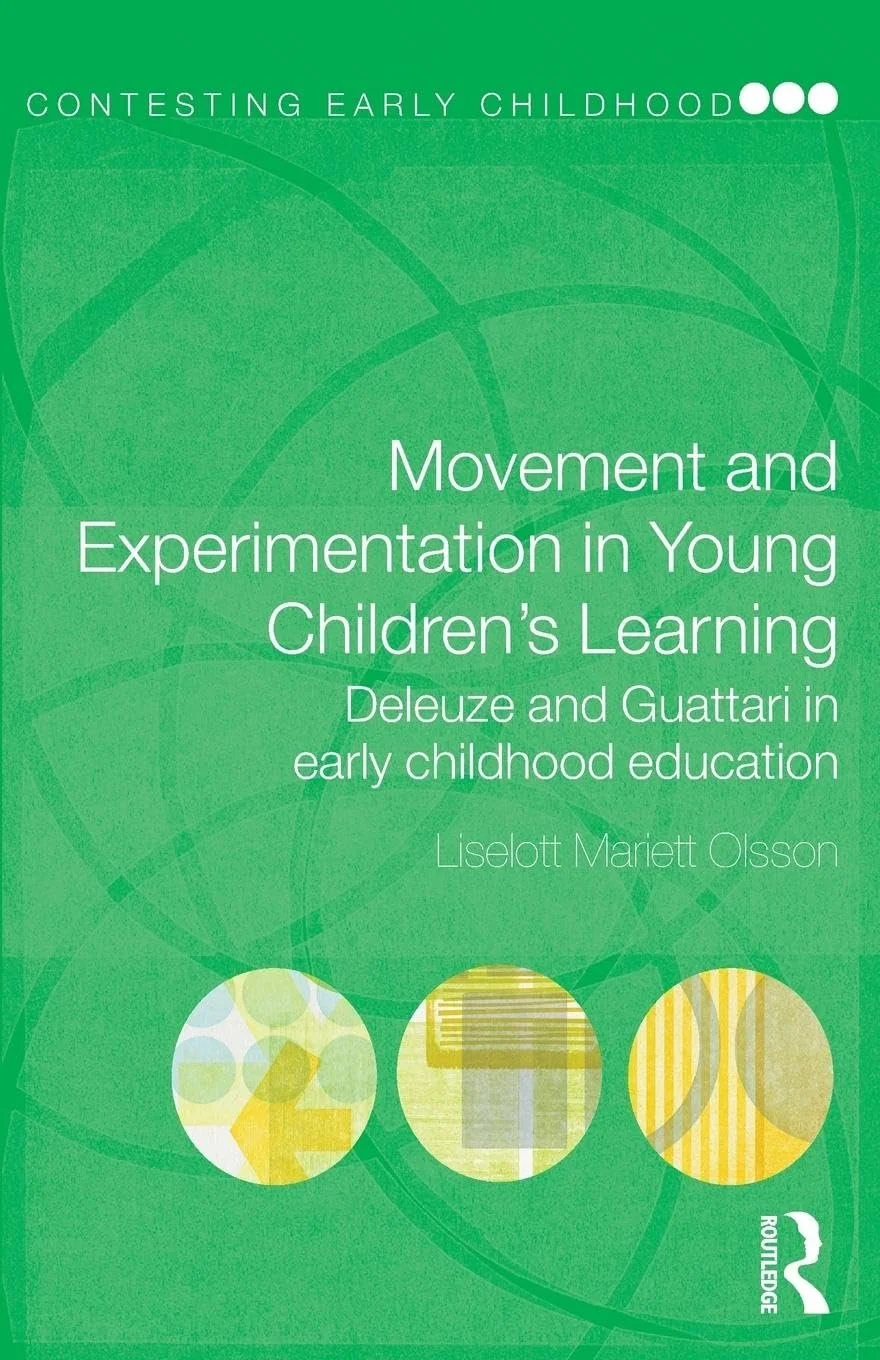
Movement and Experimentation in Young Children’s Learning
This book introduces early childhood educators to the philosophical thinking of Gilles Deleuze and Félix Guattari, offering their concepts as tools for reimagining learning beyond static developmental frameworks. Rather than seeing education as a linear path toward predetermined goals, the book embraces complexity, fluidity, and becoming.
Through detailed examples from Swedish preschools, Liselott Olsson and collaborators show how Deleuze and Guattari’s ideas—such as rhizome, assemblage, and lines of flight—can help us rethink learning as something that moves, shifts, and emerges through relationships, materials, and contexts.
The book invites educators to:
- Shift focus from fixed positions (like learning outcomes or stages) to open-ended processes.
- See science and pedagogy as creative and productive, not just evaluative.
- Challenge the divide between individual and society, embracing a more entangled view of subjectivity and learning.
Why we recommend it:
This book is both a provocation and a possibility. It introduces a language for thinking differently about children, learning, and the systems that govern them. For educators, researchers, and students willing to step outside the familiar, it offers a powerful philosophical framework for reimagining education as a space of movement, experimentation, and transformation. -

Where We Learn - Reimagining Educational Spaces
“Spaces speak. They shape how we feel, how we move, how we learn.”
This stunning book explores the intersection of architecture, design, and education, showcasing innovative learning spaces from around the world—from early childhood centers and primary schools to libraries, maker labs, and universities. It challenges the traditional box-like classroom and invites educators, designers, and policymakers to think spatially: What kind of environments help us feel curious, connected, and empowered to learn?
With case studies, essays, and bold visual storytelling, Where We Learn presents learning spaces as cultural and pedagogical statements. It asks us to imagine schools not just as places of instruction, but as ecosystems that reflect values, relationships, and possibilities.
Why we recommend it:
This book is a visual and intellectual feast. It’s perfect for educators, architects, or anyone dreaming about how physical space can support emotional, social, and intellectual growth. A reminder that learning doesn’t happen in a vacuum—it happens in places that invite us to dwell, to wonder, and to co-create. -

Place: An Introduction
“Place is space made meaningful.”
— Tim CresswellThis foundational text in human geography explores how we understand, shape, and are shaped by place. Tim Cresswell walks readers through key concepts—from space, landscape, and territory to mobility, belonging, and identity—offering a clear and accessible guide to the complex ways places are constructed and experienced.
For educators, artists, and learning designers, this book opens up vital questions: What stories do places carry? How do places include or exclude? What makes a space feel alive, or oppressive, or full of possibility?
Why we recommend it:
Cresswell gives us a language to think critically and creatively about place—not just as a physical setting, but as a lived, layered, and political reality. Learning is shaped not only by curriculum and relationships but also by the aesthetic, cultural, and emotional dimensions of place. This makes it an essential resource for anyone seeking to design learning experiences that are contextually rooted, identity-affirming, and responsive to the environments in which they unfold. -
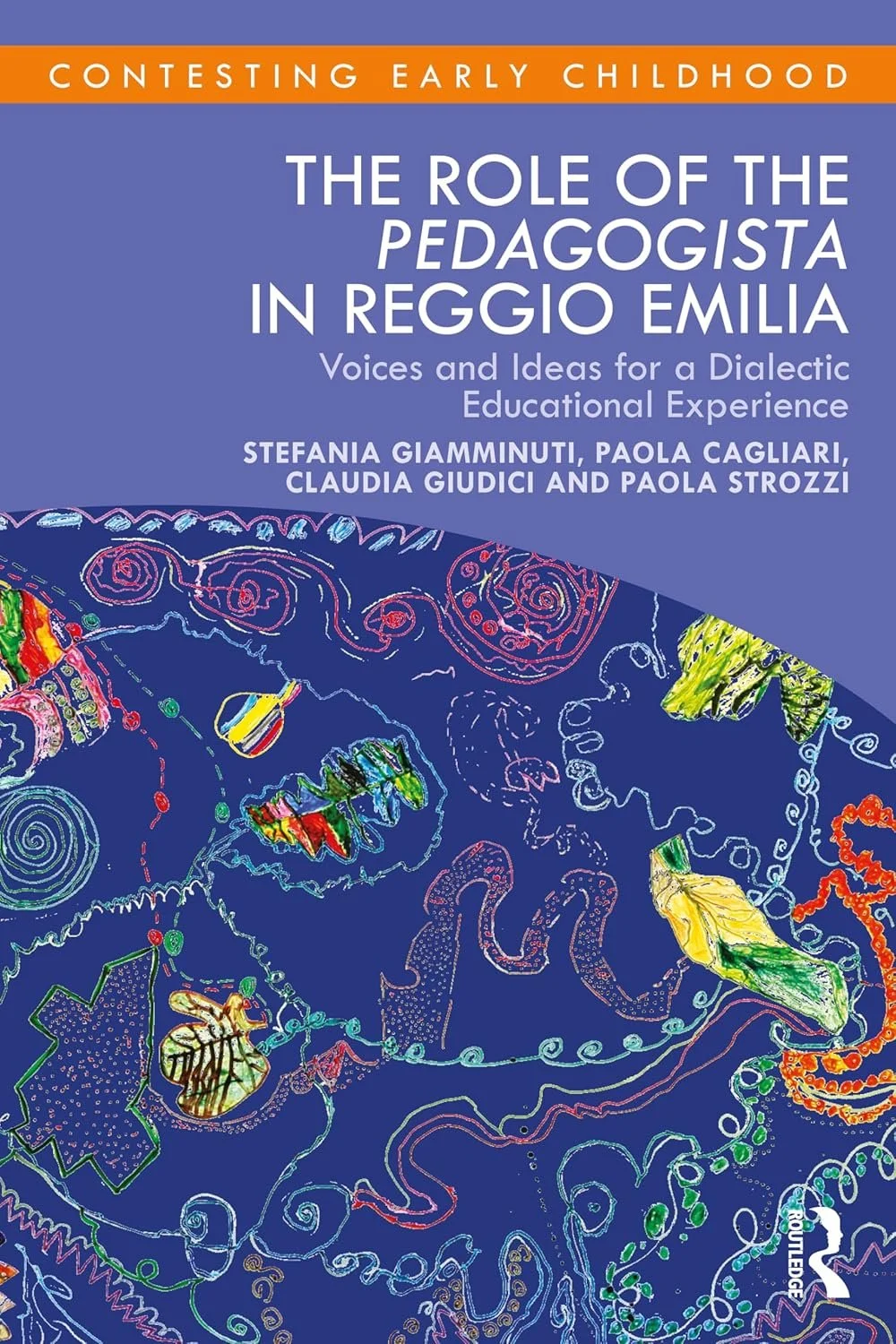
The Role of the Pedagogista in Reggio Emilia: Voices and Ideas for a Dialectic Educational Experience
What does it mean to support learning as a shared, reflective process?
This book offers a rare and insightful look into the role of the pedagogista, a key educational figure within the Reggio Emilia approach. Through a collection of essays, reflections, and dialogues, it explores how pedagogistas support teachers, children, and families in co-constructing meaningful learning experiences. Grounded in daily practice, it sheds light on how educational leadership, research, and pedagogical reflection are woven into the life of schools in Reggio Emilia.
Why we recommend this book
It reveals how schools can become places of collective inquiry, where learning is shaped by collaboration, trust, and curiosity. A valuable read for those interested in educational leadership grounded in practice and relationship. -

From Teaching to Thinking: A Pedagogy for Reimagining Our Work
This book is an invitation to early childhood educators—and all educators—to move beyond the scripts, checklists, and outcomes that too often shape teaching. Drawing on the traditions of pedagogical documentation, reflective practice, and social constructivism, Pelo and Carter propose a culture of inquiry in which educators see themselves as thinkers, researchers, and co-learners.
With stories from diverse learning settings, the book explores how teachers can reclaim their intellectual and ethical agency, engage in collaborative study, and create environments where ideas, questions, and relationships matter more than predetermined results.
It encourages educators to:
- Embrace uncertainty and reflection as essential parts of teaching.
- Cultivate thinking as a shared, relational act—not just an individual one.
- Create pedagogical spaces where children’s ideas and questions guide the learning journey.
Why we recommend it:
This book nurtures the educator as thinker, listener, and co-creator. It offers both a philosophical grounding and practical strategies for cultivating more thoughtful, ethical, and imaginative practices in early childhood education and beyond. -

Future Wise: Educating Our Children for a Changing World
In Future Wise, Harvard educator David Perkins challenges us to rethink what’s worth learning in school—not just what can be taught or tested. He argues that in a rapidly changing world, we need to design learning around “lifeworthy knowledge”: content and skills that will matter in learners' lives now and in the future.
Drawing on research and classroom practice, Perkins explores how to shift from a curriculum driven by tradition and habit to one centered on relevance, transfer, and real-world thinking. The book is both philosophical and practical, offering guiding questions and frameworks for reimagining what we teach—and why.
Why we recommend it:
Future Wise invites educators to reflect critically on the deeper purpose of education. It’s a powerful resource for those designing learning experiences that are not just rigorous, but meaningful, adaptable, and wise. -
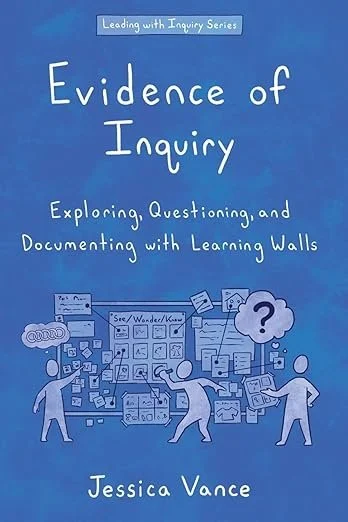
Evidence of Inquiry: Exploring, Questioning, and Documenting with Learning Walls
“When we make learning visible through space, we invite curiosity, ownership, and dialogue.”
— Jessica VanceIn this inspiring and accessible book, Jessica Vance explores how Learning Walls—dynamic, visual spaces within the classroom—can serve as evolving tools for inquiry, reflection, and pedagogical documentation. Rooted in Reggio-inspired practices and informed by her experience as an inquiry educator and leader, Vance shows how intentional use of space can help learners see themselves as thinkers, researchers, and contributors.
Rather than viewing documentation as something static or retrospective, she reframes it as an active, collaborative process—one that emerges from thoughtful questioning, shared noticing, and co-construction. With real classroom examples and practical strategies, the book helps educators transform walls from decoration into living stories of learning.
Why we recommend it:
This book beautifully complements Making Learning Visible and other Reggio-inspired texts by offering a focused, hands-on look at how space, questioning, and documentation intersect. Vance invites educators to rethink how they listen to learners, use the physical environment, and make thinking visible—in ways that empower both students and teachers. -

Dialogues with Places
Edited by Tiziana Filippini, Claudia Giudici & Vea Vecchi
(Reggio Children, 2008)“A place can be a friend, a provocation, a companion in research.”
This evocative book documents a project in which children, educators, and atelieristas from Reggio Emilia engaged in poetic, perceptive, and investigative dialogues with their local urban spaces. Through photography, drawings, and narration, it reveals how children relate to places not just as settings, but as collaborators in meaning-making.
The project unfolds as an exploration of identity, citizenship, and aesthetic sensitivity—demonstrating how even a stone wall, a drainpipe, or a fence can become part of a child's inquiry and expression. It challenges adults to see the city through the eyes of children—eyes attuned to detail, emotion, memory, and imagination.
Why we recommend it:
Dialogues with Places is a stunning example of how learning can be rooted in real places and real relationships. It invites educators to design experiences that honour children’s ways of seeing and supports the idea that environments are co-constructors of learning. A must-read for anyone interested in the pedagogical potential of public space, aesthetics, and civic engagement through education. -
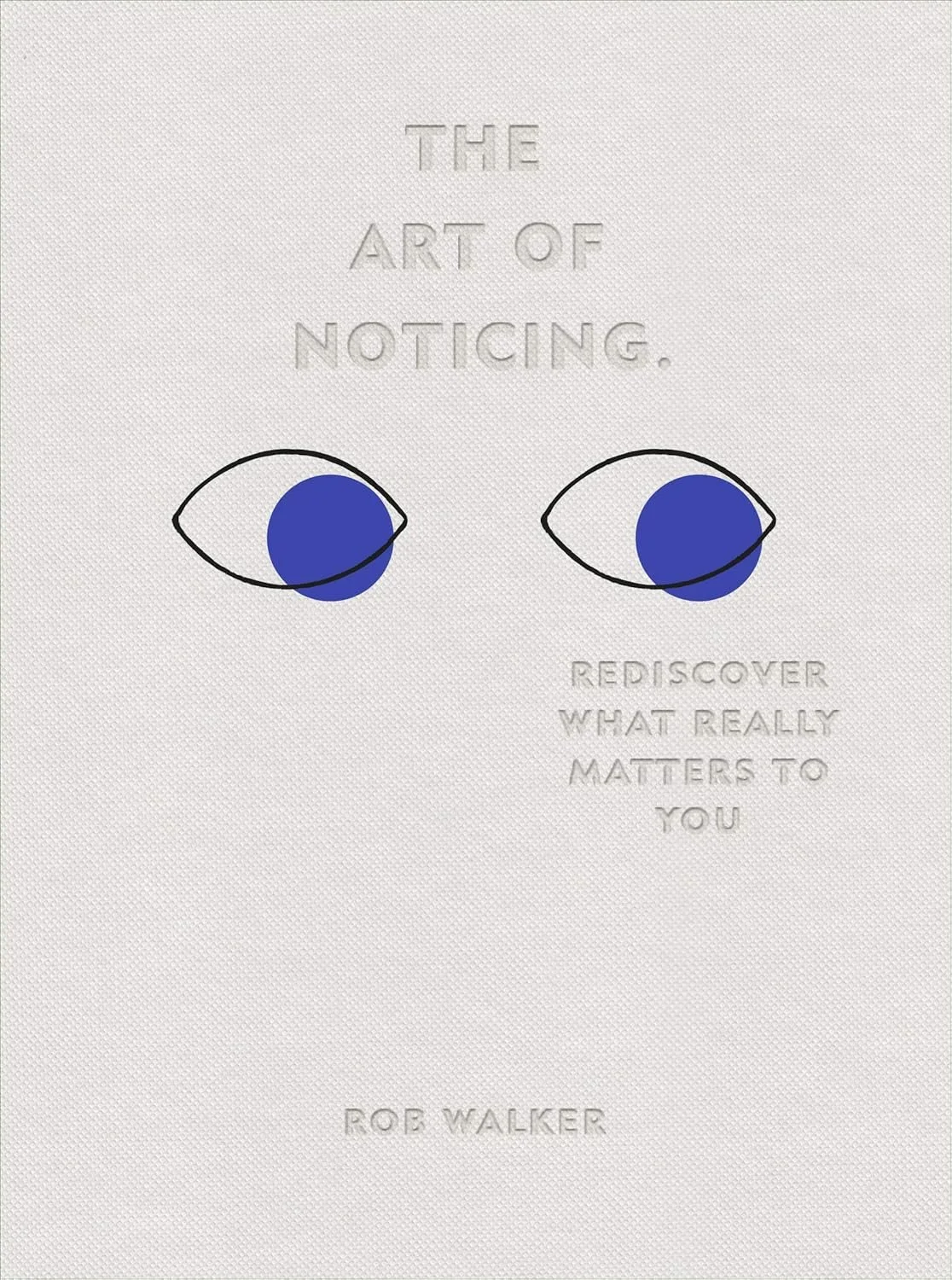
The Art of Noticing: Rediscover What Really Matters to You
“Paying attention is the most basic form of generosity.”
— Rob WalkerThis book is an invitation to slow down and see the world—and your place in it—with fresh eyes. Rob Walker offers a wide range of creative, reflective, and surprisingly simple practices that help you tune in to what often goes unnoticed: patterns on the sidewalk, forgotten memories, overlooked people, stray thoughts, small pleasures.
This edition of The Art of Noticing leans further into personal discovery—framing attention as a way to reconnect with what truly matters. It’s as much about meaning as it is about observation.
Why we recommend it:
This book is a generous companion for educators, artists, and facilitators looking to cultivate awareness, presence, and curiosity—in themselves and in others. It aligns beautifully with reflective practices, place-based learning, and experiential education. A powerful tool for designing learning moments that start with wonder. -

The Big Book of Nature Activities
This comprehensive and practical guide offers activities to help children (and adults) connect with the natural world throughout the seasons.
Rather than offering rigid lessons or outcomes, Monkman and Rodenburg emphasize asking questions, observing closely, and learning with the natural world rather than about it.
Why we recommend it:
It is a rich and flexible resource that supports a way of learning grounded in curiosity, observation, and connection to place. At its heart, it encourages educators and families to embrace an inquiry-based approach—where questions emerge from direct experiences with the natural world, and learning unfolds through exploration rather than predefined answers.Each activity becomes a starting point for noticing, wondering, and investigating: What do we see? What patterns can we find? What might be happening here, and why? This mindset turns the outdoors into a living laboratory, where children are not simply receiving information but actively constructing meaning in relationship with their surroundings.
The book also beautifully supports the values of place-based education. By aligning learning with local landscapes and seasonal rhythms, it helps children (and adults) develop a deeper sense of belonging and responsibility to the ecosystems and communities they are part of. It reminds us that nature is not a distant concept, it’s right outside our doors, full of stories waiting to be discovered.
